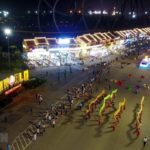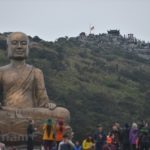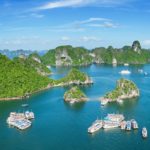The weather in Vietnam goes through changes from North to South and region to region. Vietnam has 4 distinct seasons in the North: spring, summer, autumn, and winter, while the South experiences only 2 seasons: dry season and rainy season. Each season has its own unique features and characteristics, offering different experiences of the places and landscapes.
Spring is a short season in Northern Vietnam, lasting from February to early April. The weather starts to warm up, becoming more pleasant and less cold and dry like winter. Spring is marked by a peaceful atmosphere, clear blue skies, bright sunshine, and warm breezes. However, it may also bring occasional drizzling rains.
Ha Long Bay, Quang Ninh
Ha Long Bay (Quang Ninh province) is renowned as one of the 7 new natural wonders of the world. The name “Ha Long” originates from the legend of a dragon descending into the sea during the early founding of the Vietnamese nation.
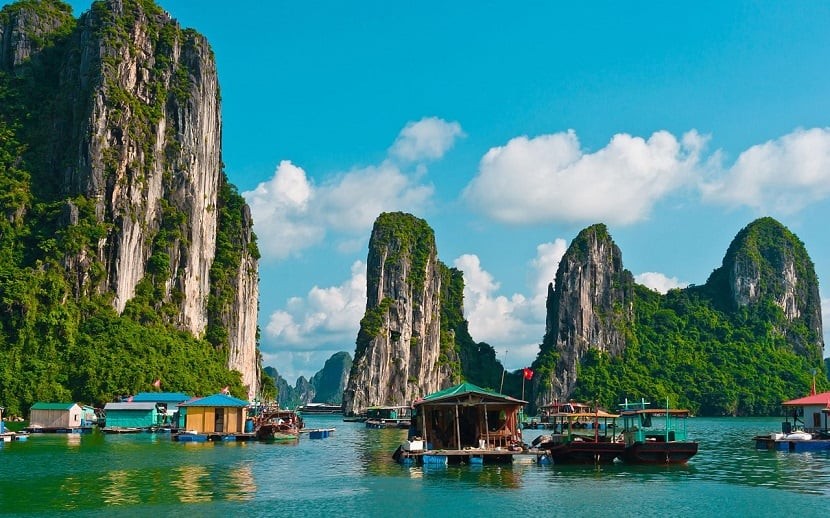 |
| Ha Long Bay (Quang Ninh province) is renowned as one of the 7 new natural wonders of the world. Photo: Vinpearl |
The spot where the dragon landed is called Bai Tu Long Bay. The dragon’s tail whipping the water formed Bach Long Vi island, part of the Ha Long Bay heritage complex, with its beautiful islands and sandy beaches.
About 180 kilometers from Hanoi, Ha Long is the first-class provincial city of Quang Ninh Province and is known as a tourism paradise in the Northern region. Thanks to its privileged location, Ha Long Vietnam attracts millions of domestic and international tourists each year.
One of the most outstanding factors that make Ha Long famous is the breathtaking natural beauty of Ha Long Bay. The bay covers an area of 1,553 square kilometers and is made up of 1,900 large and small limestone islands, each with its unique shape. Ha Long Bay in Vietnam has been repeatedly recognized as a natural wonder of the world by UNESCO, making it a must-visit destination in a lifetime.
Dragon Bridge, Da Nang
Dragon Bridge across the Han River was constructed in the area near Co Vien Cham, connecting with the Nguyen Van Linh intersection. The design of the Dragon Bridge features an image of a dragon flying over the Han River, with its head raised high, body winding, and reaching out toward the sea.
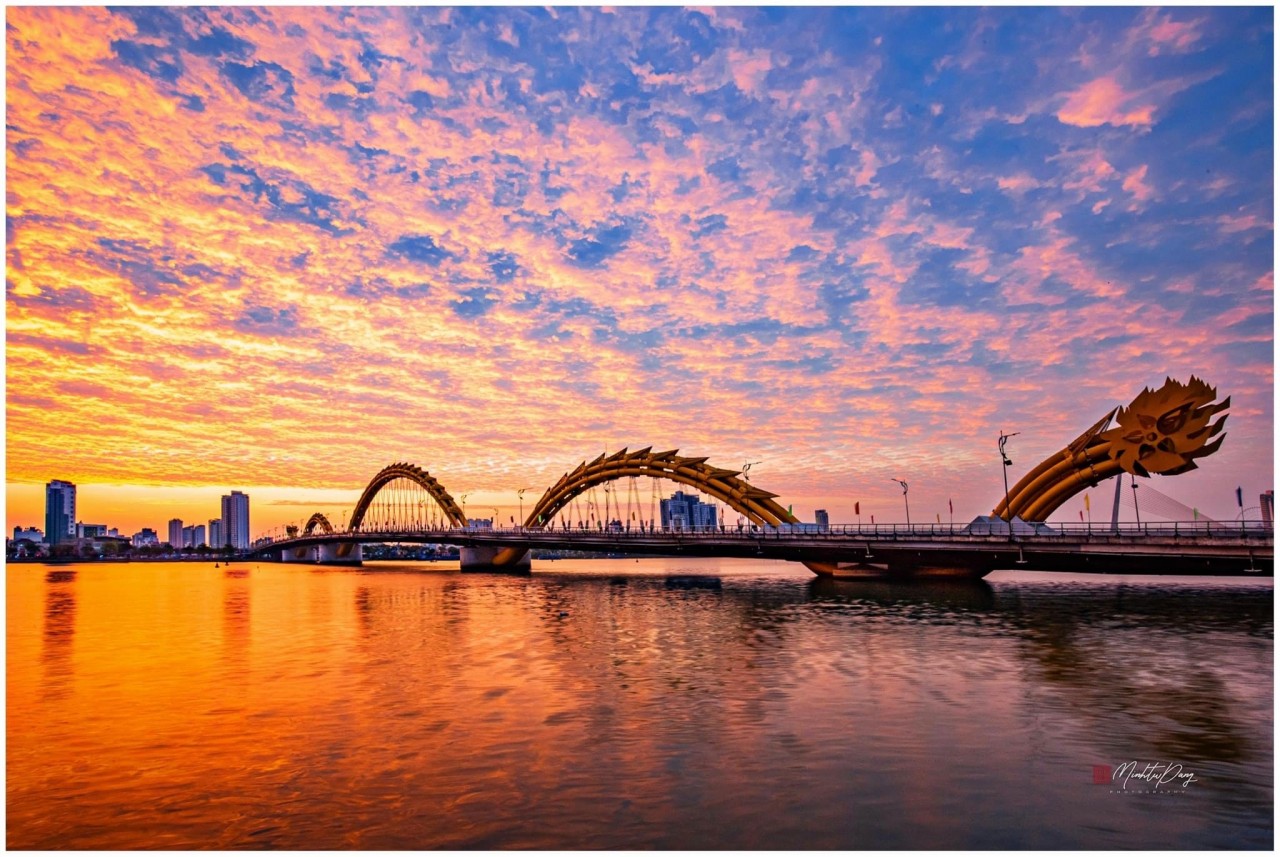 |
| Da Nang’s beautiful Dragon Bridge. Photo: Danang Leisure |
This innovative design reflects Vietnamese customs and beliefs, as well as showcasing Da Nang’s growth and development. Because of its distinctive design, the bridge has become an iconic symbol of the city and is a must-see attraction for visitors to Danang.
In addition to impressing tourists with its architectural design, the Da Nang Dragon Bridge also features a fascinating function that astounds everyone who sees it for the first time: a dragon’s fire-breathing and water-spraying performance. The performance takes place at 9 PM every Saturday, Sunday, and holidays.
Long Bien Bridge, Hanoi
Long Bien Bridge is one of the iconic symbols of Hanoi Capital. It was the first steel bridge to cross the Red River and was designed by French architect Gustave Eiffel.
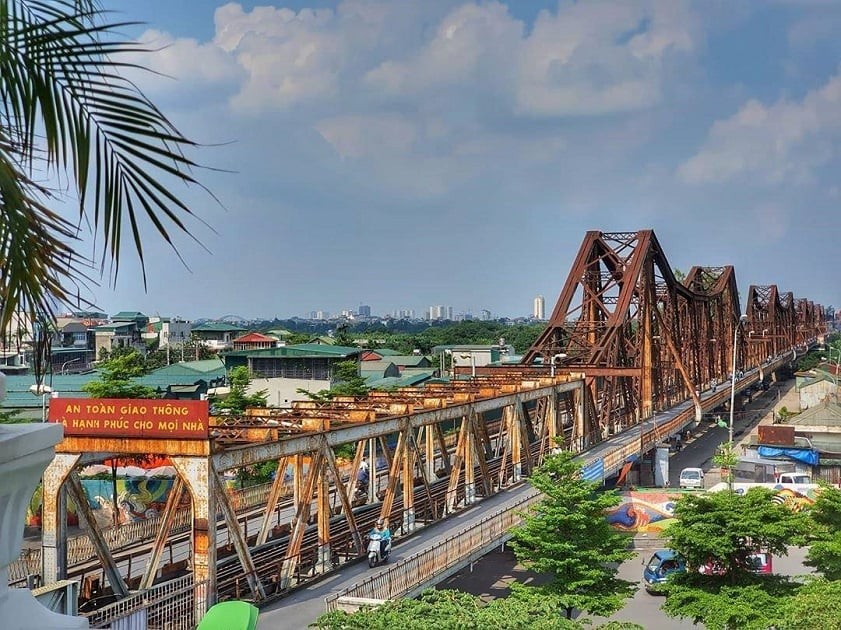 |
| Long Bien Bridge is one of the symbols of Hanoi Capital. Photo: VinWonders |
Long Bien Bridge serves as a reminder of French technological innovation during that time period. Under the guidance of French experts, more than 3,000 Vietnamese workers took on the challenge of building the bridge, using over 30,000 cubic meters of stones and metals, including 5,600 tons of rolled steel, 137 tons of pig iron, 165 tons of iron, and seven tons of lead. The total cost of the bridge was a staggering 6,200,000 French francs at the time (equivalent to roughly USD 70 million today). The construction of Long Bien Bridge was originally planned to take 60 months but was completed 45 months ahead of schedule.
In its more than 100-year history, Long Bien Bridge was once the second-longest bridge in the world (second only to the Brooklyn Bridge spanning the East River in the US). It has even earned the nickname “the horizontal Eiffel Tower in Hanoi”.
Nha Rong Wharf, Ho Chi Minh City
Nha Rong, meaning “House of the Dragon,” is one of the few remaining buildings in the French architectural style in Ho Chi Minh City. Situated by the Saigon River, it is a perfect blend of Eastern and Western architectural influences.
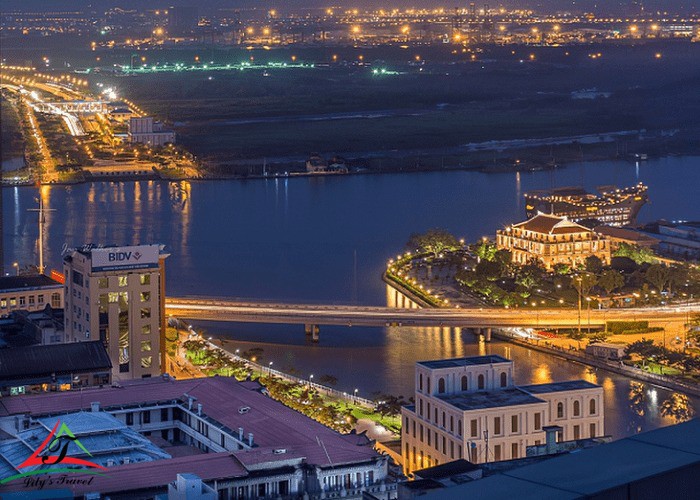 |
| Nha Rong, meaning “House of the Dragon,” is one of the few remaining buildings in the French architectural style in Ho Chi Minh City. Photo: Lily’s Travel Agency |
The Dragon House originally served as the headquarters for French colonial officials. Today, the site is best known as the starting point of Ho Chi Minh’s journey for national salvation. After the liberation of Saigon and national reunification in 1975, Nha Rong (Dragon House) was transformed into a memorial site dedicated to the great Vietnamese leader. In 1995, the building was renovated and converted into a branch of the Ho Chi Minh Museum. In its early days, the museum covered an area of 250 square meters and had three exhibition rooms.
Mekong River Delta
Vietnam is famous for its two major areas of rice cultivation: one in the North (the Red River Delta) and the other in the South (the Mekong River Delta). Both regions are considered the “rice baskets” of Vietnam.
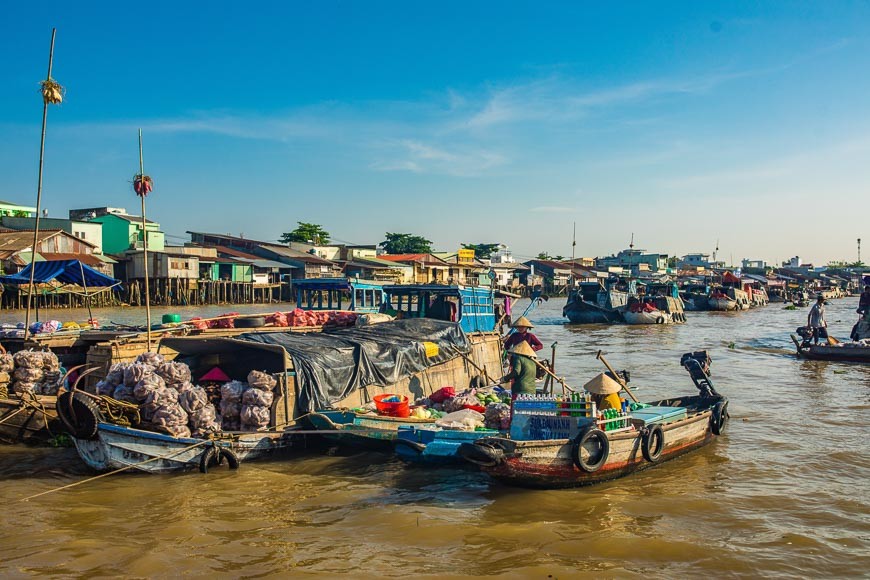 |
| The Mekong River Delta is formed by the mighty Mekong River, originating from the Tibetan Highland plateau. Photo: Vietnam Tourism |
The Mekong River Delta is formed by the mighty Mekong River, which originates from the Tibetan Highland plateau. The delta is constantly renewed by the annual silt deposits and enjoys favorable weather conditions almost all year round. Generally, there are two primary seasons in this region: the dry season and the rainy season. The Mekong River Delta boasts some of the most fertile land in Vietnam, making it ideal for farming, fishing, gardening, and poultry raising. Tourism also plays a significant role in the region’s development due to its stunning landscapes and rich cultural heritage.
Programme of National Tourism Year 2018 in Quang Ninh announced
NDO/ VNA – The Ministry of Culture, Sports and Tourism on September 22 announced the theme and activities of the National Tourism Year 2018, which will be hosted by the north-eastern province of Quang Ninh.


